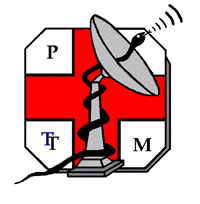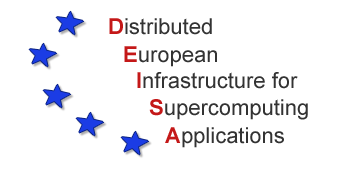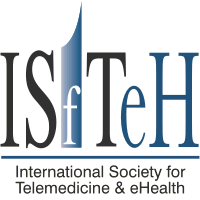

 |
International Conference on eHealth, Telemedicine, and Social Medicine eTELEMED 2009 February 1-7, 2009 - Cancun, Mexico |
|
|||||||||||||
| Details: |
|
Authors of selected papers will be invited to submit extended versions to a IARIA Journal Authors of selected papers will also be invited to submit to Telemedicine and e-Health Journal |
All tracks/topics are open to both research and industry contributions.
Tracks:
eHealth technology and devices
Telemedicine software and devices; Diagnostic/monitoring systems and devices; Electronic health cards; Home monitoring services and equipment; Telemedicine equipments; Online instruments supporting independent living; eHealth telecommunication services; eHealth wireless data communications; IPTV and/or phone portal clients; Standardised biomarker analysis for intrinsic linkage to disease outcomes
eHealth data records
eHealth medical records; Reengineering of care plans in electronic format; Digital imagery and films; Internet imaging localization and archiving; Personal, adaptive, and content-based image retrieval imaging; Privacy and accuracy communications of patient records; Secure patient data storage; Secure communications of patient data; Authenticated access to patient records; Patient privacy-enhancing technologies (PETs); Robust approaches to algorithmic modeling of outcomes; Dynamic graphing of individual’s data trends; Data aggregation technologies; Delivery of information governance policies; Tools/systems for automatic document metadata tagging; Dataset harmonization across multiple sites; Standard/symbolic representations of multiple physiological trends and clinical/life events
eHealth information processing
Electronic imagery and visualization frameworks; Color imaging and multidimensional projections; Imaging interfaces and navigation; Medical image processing; Video techniques for medical images; Computer vision and resolution; Rapid evaluation of patient's status; Anticipative processing of patient's status; Videoconferencing; Telepresence
eHealth systems and communications
Hospital information systems; Internet/intranet services; Surgical systems; Sensor-based systems; Satellite eHealth communications; Secure data transmissions; Body-sensor networks; Separation of concerns between domain problems and technological choices; Service-Oriented Architecture (SOA) approaches to maximize translation of clinical evidence; Cross-border eHealth systems; HealthGrid; Wireless 'flooding' technology providing cheap e-health platform support to whole towns/cities
eHealth systems and emergency situations
Medical emergencies and communications; Detection emergencies situations; Medical resource allocation, optimization, and simulation; Real-time emergency situations management; Security and accuracy of emergency communications; Geolocalisation and optimization technology services for emergency fleet vehicles
Telemedicine/eHealth applications
Virtual telemedicine; Mobile eHealth services; Home monitoring and homecare applications; Wireless homecare; User-generated eHealth care; Personalized medicine; Wireless telemedicine ; Telehomecare technologies for the elderly; Automatic detection of infectious diseases
Telemedicine/eHealth services
Clinical telemedicine; Distributed surgery; Telemedicine and telehealth; Telepathology; Telecardiology; Telerehabilitation; Elderly and impaired patient services; Remote operational medicine; Remote consulting services; Telemedicare monitoring; Vital signs monitoring; Computer generated self care advice; Telemedicine handbag; Workflow approaches to improve healthcare intervention outcomes; Workflow to improve patient safety, decision support, and objective measurement of service quality; Support for evidence-driven integrated care pathways (ICP’s)
Social and financial aspects
Safety in telemedicine; Business models; Cost-benefit studies; Legal and ethical aspects; On-line payment and reimbursement issues; Ambient Assisted Living; Shared-care systems for eHealth; Privacy in the eHealth systems; Multi-lingual eHealth systems; Continuity in eHealth care; System simulations for business case development and risk reduction; Problem-independent (generic application) eHealth architecture; 'Lean' e-health workflows; ‘Relative risk' dashboards - how the patient's condition 'sits' within population risk
Classical medicine and eHealth integration
Wide-area integration of eHealth systems; Current eHealth realizations and projects; Innovation in eHealth; Telemedicine portals; Standardization and interconnectivity of eHealth systems; Implementation of cross-border eHealth services; eHealth integration into routine medical practice; Affordable approaches to e-Health; eHealth acceptance with medical professionals and patients; Developing countries and eHealth; Distance education for eHealth; xHR standardization; Impact of ‘global’ integration standards and interoperability projects (e.g. CDA, IHE/XDS, SNOMED-CT, Continua Healthcare Alliance, IEEE11073, Common User Interface (CUI)
Preventive eHealth systems
Systematic risk analysis technologies for disease early detection and prevention; 'Patient path' hubs, mobile devices and/or dedicated home-based network computers; Information models for evaluation of disease progression risk/disease processes; Systems supporting quantitative healthcare (predictive outcomes) modeling; Health risk factor data collation and multiple longitudinal trend analyses; Support for disease prevention aimed at healthy individuals; Data aggregation and visualisation technologies for population-based reporting; 'Risk signature’ discovery to indicate optimal preventative or screening actions; Mapping SNOMED-CT terminologies to disease model archetypes; Quantitative individualized outcome risk analysis; Services for longitudinal data analysis/visualisation; Continuous workflow management across clinic, home and mobile locations
Challenges of large-scale, cost-effective eHealth systems
Integrated technology, social/behavioral and business modelling research for large-scale deployments; Total operational cost-effectiveness modelling; Lessons from large-scale telehealth/telecare demonstrators in different parts of the world; Standardised data collation infrastructures (data service layers); Impact of grid and service-oriented computing; Roles of global/international interoperability organisations (e.g. IHE and Continua); Scaleable multi-data trend management; Robust data collection along the ‘patient path’ for improved decision support; Delivery of ‘composite’ process functions (e.g. contributed by multiple vendor systems); Paths to semantically-harmonised eHealth systems; Semantic interoperability and openEHR archetypes; Applications of harmonised (standardised) datasets across multiple sites; Keeping technology simple and affordable
Nurse team applications
ePatient and eNurse tools that are simple to adopt and use; Public eHealth education & information; Life time health records; Primary care centers and home monitoring; Monitoring for signs and progression of complications; eHealth awareness, education and adoption; Mapping to individualized care plans; Continuous ‘closed loop’ outcomes analysis; Intervention measurement technologies; Personal target setting
Personalized eHealth
eHealth and life; Fundamentals in eHealth personalization; Wearable and implantable systems; Micro and nano eHealth sensors; Diagnostics using biosensors and textiles; Interacting with organic semiconductors; Personalized eHealth market; Personalized eHealth business models; Ubiquitous monitoring; Personalized eHealth and classical health networks; Trends in personalized eHealth; ICT solutions for patient self-management






